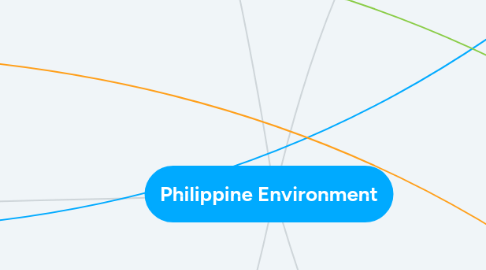
1. History
1.1. Political/Economical
1.1.1. Has become 34th Largest economy the world
1.1.2. Trade/Exports
1.1.2.1. Semiconductors & Electronics
1.1.2.2. Clothing
1.1.2.3. Copper
1.1.2.4. Fruits
1.1.3. Drug war
1.1.3.1. President Rodrigo Duterte vows to kill drug dealers/abusers
1.1.3.2. "Shabu" (Methamphetamine) is most widely trafficked, illegal drug.
1.1.3.3. 1.7 Million illegal users
1.1.4. Tourism
1.1.4.1. Major contributor to the economy
1.1.4.2. Biodiversity is a major attraction
1.1.4.3. 7,500 islands
1.1.4.4. A widely favorited destination for retirement
1.2. Environmental
1.2.1. Weather
1.2.1.1. Tropical
1.2.1.2. 3 seasons
1.2.1.2.1. "tag-init"
1.2.1.2.2. "tag-ulan"
1.2.1.2.3. "tag-lamig"
1.2.2. Developmental
1.2.2.1. Living environment
1.2.2.1.1. Largely farming conditions
1.2.2.1.2. Cement or thatch housing
1.2.2.2. Transportation
1.2.2.2.1. Dirt roads
1.2.2.2.2. Horse-drawn vehicles
1.3. Medical
1.3.1. From 1950s onwards, there has been medical education and technological advances not far from the global standards
1.4. Religion
1.4.1. 80% of population Catholic
1.4.2. Strong religious roots
2. Application to Nursing
2.1. Health Education
2.1.1. Lifestyle counseling
2.1.1.1. Diet
2.1.1.2. Exercise
2.2. Disaster relief
2.2.1. Emergency Volunteering
2.2.2. Mission trips
2.2.2.1. Health Screenning
2.2.2.2. Medical Clinics
3. Consequences of Action/Inaction
3.1. Action
3.1.1. Cleaner Air
3.1.2. Decreased incidences of impaired health
3.1.2.1. Lifestyle diseases can be prevented
3.1.2.2. Acquired diseases such as infections can be treated appropriately
3.1.3. Cleaner water supplies
3.1.3.1. Health and agricultural benefits
3.1.4. Fewer families without help following natural disasters
3.1.4.1. Families would be able to get back on their feet quicker
3.2. Inaction
3.2.1. Further decline in populational health
3.2.1.1. Greater death tolls related to disease
3.2.2. Further air pollution
3.2.3. Further water pollution
3.2.4. More families left without help following natural disasters
3.2.4.1. Can lead to increased incidences of respiratory and infectious diseases
4. Cultural Issues
4.1. Poverty
4.1.1. 21.6% of Filipinos were considered to be in poverty as of 2015
4.1.2. Greatest incidence among farmers and fishermen.
4.1.3. direct correlation between income inequality and educational inequality
4.1.4. Compromised housing and medical availability among poorer classes
4.2. Pollution
4.2.1. Air pollution
4.2.1.1. Transportation
4.2.1.2. Illegal mining
4.2.1.3. Deforestation
4.2.2. Water pollution
4.2.2.1. 58% of groundwater is polluted
4.2.2.2. 1/3 of river systems are considered suitable for public water
4.2.2.3. Leading cause is untreated wastewater
4.3. Weather
4.3.1. Climate change
4.3.2. Natural disasters
4.3.2.1. Most exposed country to tropical storms
4.3.2.2. Earthquakes
4.3.2.2.1. 7.2 Leyte earthquake of 2013
4.3.2.3. Volcanic activity
4.4. Developmental
4.4.1. Living environment
4.4.1.1. Many poor live in "Squatters"
4.4.1.2. Middle class (Largest of population))
4.4.1.3. Higher class (Smallest of population)
4.5. Industrial advancements
4.5.1. Rising of factories and plants
4.5.2. Overcrowding of vehicles with insufficient road systems to match
4.6. Medical
4.6.1. Western influenced diet/lifestyle
4.6.2. Heart disease
4.6.3. Stroke
4.6.4. Respiratory infections
4.6.5. Diabetes
5. Resources/education in the Community
5.1. Going "green"
5.1.1. Electric or gas reduced vehicles
5.1.2. Recycling
5.1.3. Clean water preservation
5.2. Health education
5.2.1. How to prevent heart disease
5.2.2. Philippine Stroke Society
5.3. Disaster relief
5.3.1. Red Cross Foundation
5.3.2. ADRA of the Philippines

